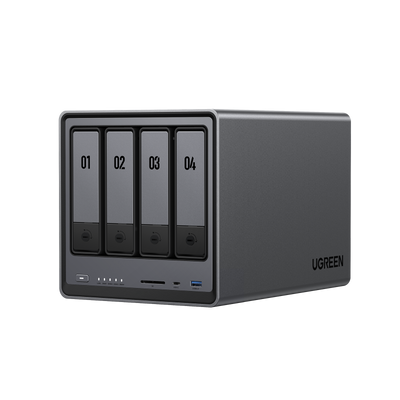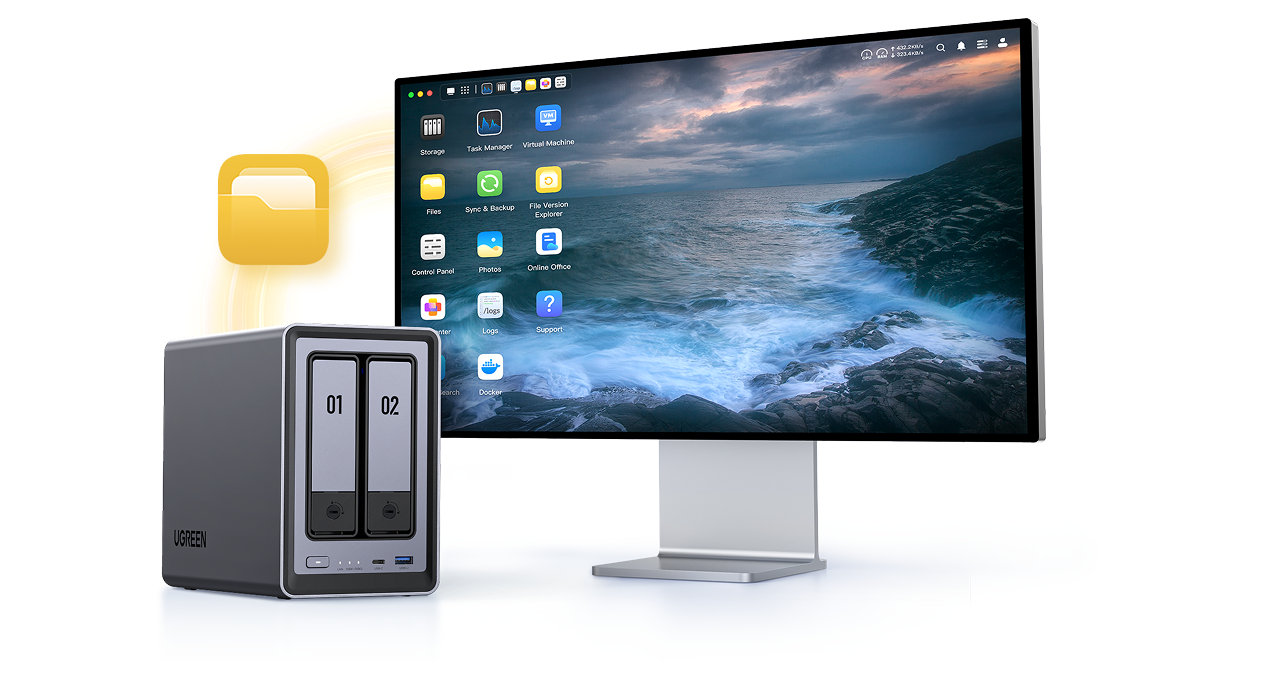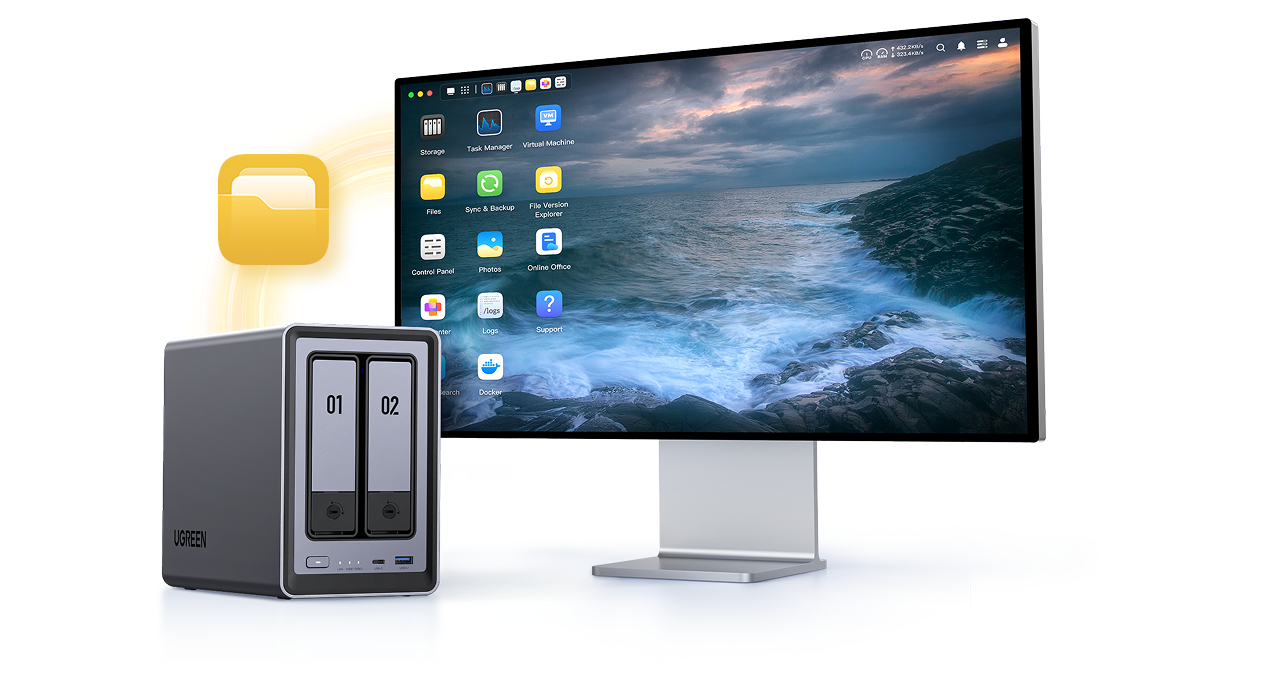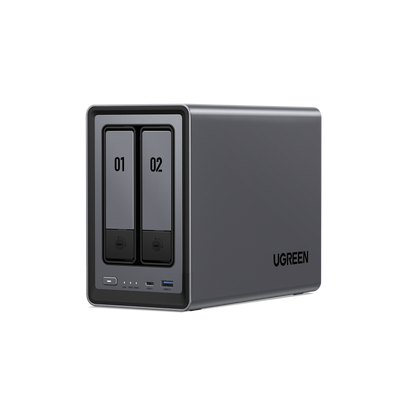How to Set Up NAS for Beginners: Easy Storage Guide 2025
NAS (Network-Attached Storage) is a dedicated storage device that connects to your home or office network, allowing multiple devices to access, share, and back up files in one central location. Whether you’re looking to back up family photos, streamline your small business, or simply declutter your digital mess, NAS is a powerful tool. If you want to learn more about NAS basics, you can read our blog post: What is NAS storage?

Key Takeaways:
- Beginner-friendly NAS devices like 2-bay models are simple to set up and scale, with guided installation, user-friendly apps, and compatibility across Windows, macOS, and mobile.
- Choosing the right hard drives (e.g., Seagate IronWolf, WD Red) and using Ethernet improves speed and reliability for streaming and large file transfers.
- Features like RAID redundancy, remote access, and energy-efficient design make NAS a secure, future-ready solution for managing your digital life.
Why Do Novices Need NAS?
Ever found yourself juggling files across multiple devices, wondering where that one important document went? Or perhaps you’re uneasy about storing your personal photos on a cloud service, unsure who might have access. These are the kinds of everyday frustrations that Network-Attached Storage, or NAS, is designed to solve:
- Centralised Storage: Imagine all your files, photos, documents, videos, stored in one place, accessible from your laptop, phone, or tablet. No more frantic searches or duplicate files cluttering your devices.
- Data Control and Privacy: With NAS, your data stays local, under your roof. You’re not handing it over to a faceless corporation or worrying about privacy policies. It’s your digital vault, and you hold the key.
- Cost Savings: Cloud services like Dropbox or Google Drive charge recurring fees that add up over time. NAS, on the other hand, is a one-time investment. You buy the hardware once, and you’re set for years and years.
- Easy Backups: Automatically back up your computer or phone to your NAS. If your device crashes or gets lost, your files are safe and sound. It’s peace of mind, automated.
- Media Streaming: Want to watch a film on your smart TV or listen to music on your phone without hogging device storage? NAS can stream media directly to your devices, turning your living room into a personal cinema.
Things to Consider When Purchasing a NAS
Choosing your first NAS device can feel like navigating a maze—options abound, and it’s easy to get lost in technical specs and jargon. But fear not; by focusing on a few key questions, you can find a NAS that not only meets your current needs but also grows with you.
1. How much storage do I really need?
It’s tempting to focus on what you need today, but your data will grow—photos, videos, backups, and more. A good rule of thumb: start with a few terabytes if you’re a light user (documents, some photos), but consider 40TB or more if you’re into media streaming or have a small business. Remember, it’s better to have unused space than to run out mid-project.
2. Will my NAS grow with me?
NAS devices come with a set number of bays, think of these as parking spaces for your hard drives. A 2-bay NAS is a solid starting point, offering room for two drives and the option to mirror them for data protection. But if you’re planning to store large video libraries or run a growing business, a 4-bay model gives you more flexibility to expand. It’s like buying a house with an extra bedroom—you might not need it now, but it’s there when you do.

3. Can I set this up without a tech degree?
The good news: you don’t need to be a network engineer to get started. Brands like UGREEN NAS are renowned for their user-friendly interfaces, offering setup wizards that guide you step-by-step. It’s as simple as plugging in the device, following on-screen prompts, and letting the NAS do the heavy lifting.
4. Is it compatible with my current setup?
Your NAS needs to play nice with your existing devices and network. The good news is that most modern NAS units support Windows, macOS, and mobile platforms out of the box. Just ensure your home network is stable—ideally, connect the NAS via Ethernet for the best performance. If you’re using older devices, double-check compatibility.
5. Will it spike my energy bills?
Even though most NAS devices are built to run efficiently, some consume more power than others depending on their hardware and usage. If you’re curious about how much electricity your setup might draw, our breakdown on NAS power consumption offers practical insights and real-world examples.
Here’s how to get started, step by step:
Modern NAS devices are built with beginners in mind, offering intuitive interfaces and guided setups that demystify the process.
1. Choose the Right NAS Device
-
Beginner-Friendly Option: A 2-bay NAS, like the UGREEN NASync DXP2800, is affordable and straightforward, ideal for storing photos, documents, or backups.
{{UGPRODUCT}}
- Future-Proofing: If you’re eyeing a media library or small business use, a 4-bay model gives you room to grow.
2. Pick Your Hard Drives
- NAS-Optimised: Go for drives built for the job, like Seagate IronWolf or WD Red. They’re designed to run 24/7 without a hitch.
- Size Matters: Start with 2TB per drive for basic needs. Scale up to 4TB drives or more if you’re archiving films or hefty files.
They can vary in acoustic performance—especially as capacities increase. If you want to avoid unexpected hums or vibrations, check out our guide to the best quiet NAS hard drives for noise-tested options that don’t sacrifice reliability.
3. Install the Drives
-
No Tools, No Fuss: Most NAS devices feature slide-in bays. Pop the drives in, secure them (check the manual), and you’re good to go.

4. Connect to Your Network
- Wired Wins: Use an Ethernet cable to link your NAS to your router. It’s faster and more reliable than Wi-Fi for shifting big files.
5. Power Up and Dive In
- Access Made Simple: Download the manufacturer’s app or enter the NAS’s IP address (found via your router or manual) into your browser.
- Wizard Walkthrough: The setup software guides you through configuring the system, mostly just clicking “next.”
6. Set Up Storage and Security
- RAID for Redundancy: RAID 1 mirrors your data across two drives, so one can fail without losing everything. Perfect for beginners.
- Organise Your Files: Create shared folders, “Photos”, “Work”, “Backups”, and tweak permissions if you’re sharing with others.
7. Go Remote (If You Fancy)
- Anywhere Access: Use the manufacturer’s app or a VPN to reach your files securely from outside your home.
Final Tips for NAS Beginners
Setting Up Your NAS
In the end, your NAS is more than a gadget—it’s a companion on your journey to a more organised, secure, and empowered digital existence. So, take a deep breath, trust the process, and enjoy the ride. You’ve got this.




